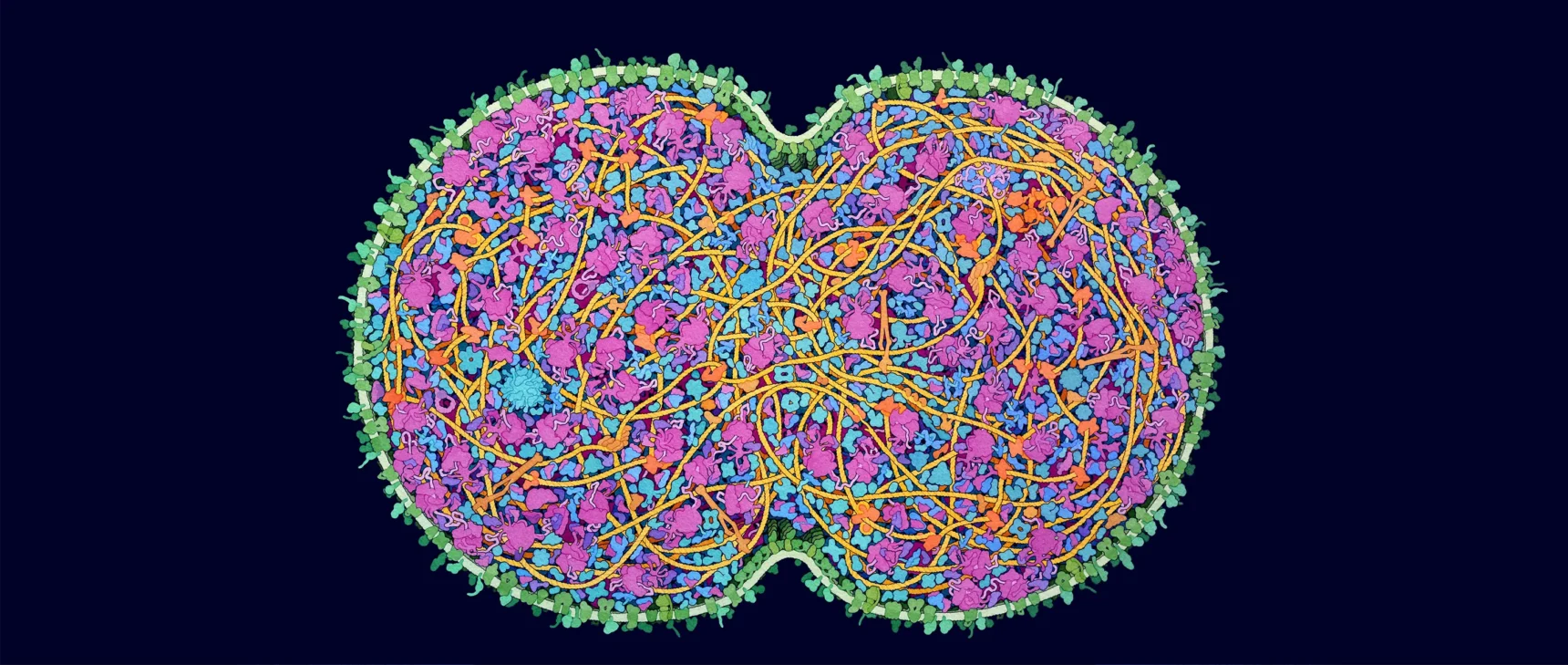Two Students Unravel a Widely Believed Math Conjecture
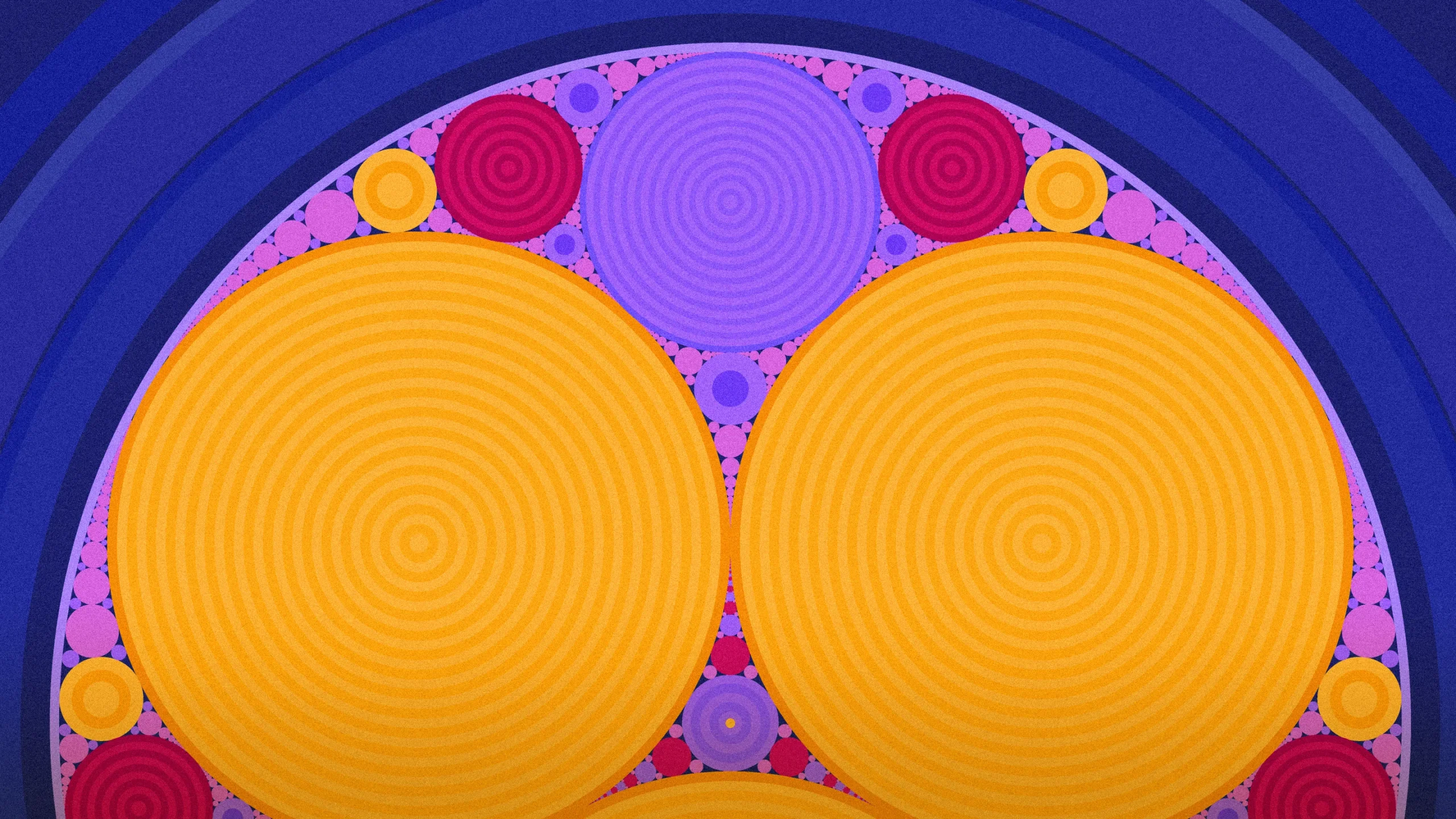
About 2,200 years ago, the Greek geometer Apollonius of Perga inquired about how circles would fit together if they all touched each other at a single point.
Samuel Velasco/Quanta Magazine
Introduction
Summer Haag and Clyde Kertzer had high hopes for their summer research project. Blindsiding an entire subfield of mathematics was not one of them.
In May, Haag was finishing her first year of graduate school at the University of Colorado, Boulder, where Kertzer was an undergraduate. Both looked forward to a break from classes. Haag planned to explore new hikes and climbing routes. Kertzer, a Boulder native, wanted to play soccer and prepare his grad school application. But as aspiring research mathematicians, they had also applied for a half-time summer research program in the group of the mathematician Katherine Stange.
Stange is a number theorist who describes herself as a mathematical “frog” — someone who delves deep into one problem’s intricacies before hopping to another. She is interested in “simple-seeming questions that lead to a richness of structure,” she said. Her projects often poke at number theory’s elusive open problems by using computers to generate large data sets.
Haag and Kertzer began the program on Haag’s 23rd birthday with a weeklong primer on Apollonian circle packings — the ancient study of how circles can harmoniously squeeze into one larger circle.
Imagine arranging three coins so that each one touches the others. You can always draw a circle around them that touches all three from the outside. Then you can start to ask questions: How does the size of that bigger circle relate to those of the three coins? What size circle will fit into the gap between the three coins? And if you start to draw circles that fill in progressively smaller and smaller gaps between circles — creating a fractal pattern known as a packing — how do the sizes of those circles relate to one another?
Rather than think about the diameter of these circles, mathematicians use a measure called curvature — the inverse of the radius. So a circle with radius 2 has curvature 1/2, and a circle with radius 1/3 has curvature 3. The smaller the circle, the bigger the curvature.
Merrill Sherman/Quanta Magazine
Renaissance mathematicians proved that if the first four circles have a curvature that’s an integer, the curvatures of all the subsequent circles in the packing are guaranteed to be whole numbers. That’s remarkable on its own. But mathematicians have taken the problem a step further by asking questions about which integers show up as the circles get smaller and smaller and the curvatures get larger and larger.
In 2010, Elena Fuchs, a number theorist now at the University of California, Davis, proved that curvatures follow a particular relationship that forces them into certain numerical buckets. Shortly afterward, mathematicians became convinced that not only must the curvatures fall into one bucket or another, but also that every possible number in each bucket must be used. The idea came to be known as the local-global conjecture.
“Lots of works referenced it as though it were already fact,” Kertzer said. “We discussed it as though it was going to be proven at some point in the near future.”
James Rickards, a mathematician at Boulder who works with Stange and the students, had written code to examine any desired arrangement of circle packings. So when Haag and Kertzer joined the group on May 15, they thought they’d create cool plots of the reliable local-to-global rule kicking in.
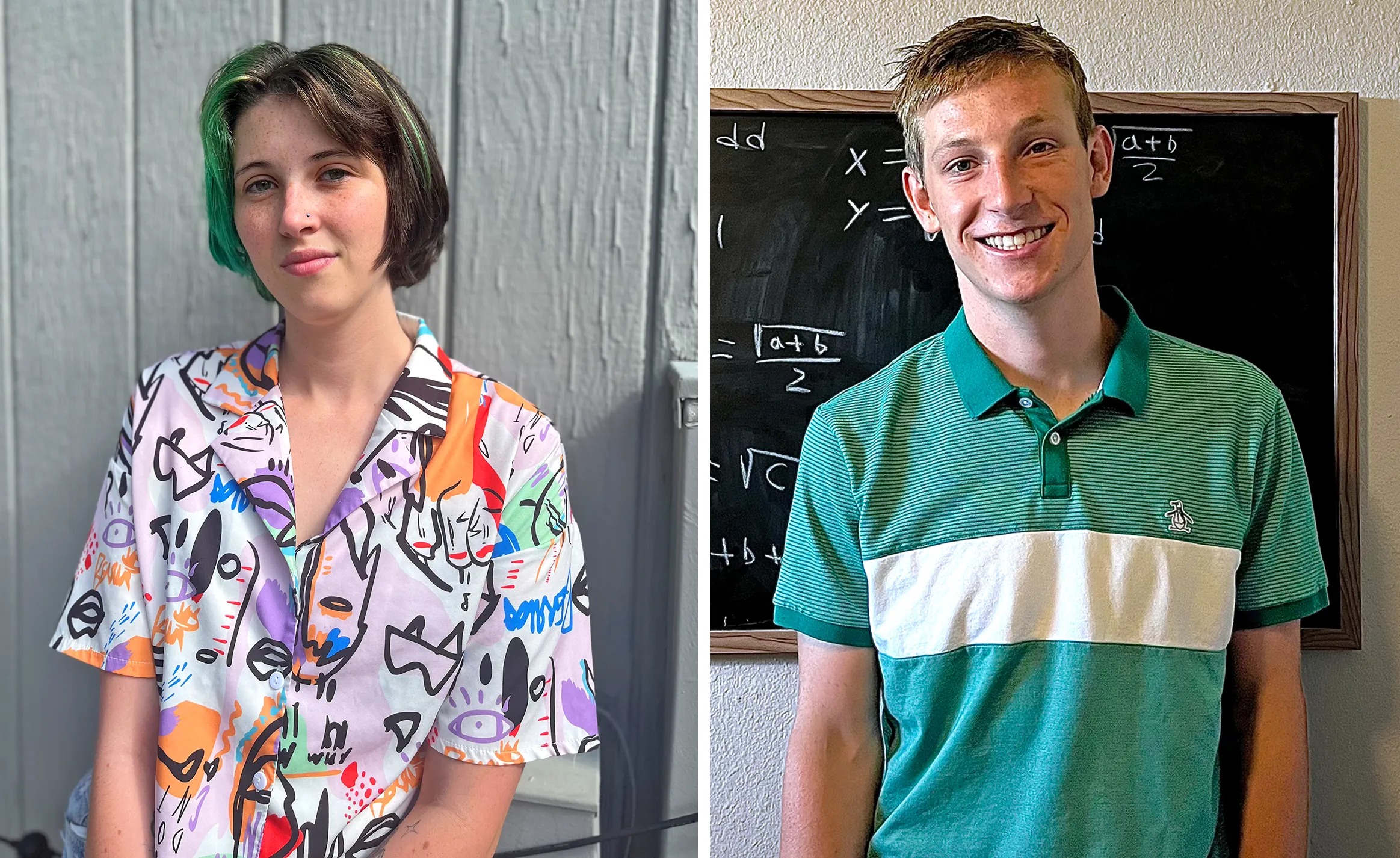
At the start of their project, Summer Haag (left) and Clyde Kertzer used data plots to discover that something was amiss.
Ilyas Salhi (left); Courtesy of Clyde Kertzer
Stange flew to France for a conference in early June. When she returned on June 12, the team huddled around charts that demonstrated how a few buckets seemed to be missing certain numbers.
“We weren’t investigating this phenomenon,” Rickards said. “I wasn’t trying to test that it’s true. I knew it was true — I just assumed it was true. And then suddenly, we’re faced with data that says it’s not.”
By the end of the week, the team was confident the conjecture was false. Numbers they expected to appear never did. They worked out a proof, and on July 6 they posted their work to the scientific preprint site arxiv.org.
Fuchs remembers talking to Stange soon after the proof clicked into place. “How much do you believe the local-to-global conjecture?” Stange asked. Fuchs responded that of course she believed it. “Then she showed me all these data and I said, ‘Oh my goodness, that’s amazing,’” Fuchs said. “I mean, I really believed that the local-to-global conjecture was true.”
“Once you see it, you just say ‘Aha! Of course!’” said Peter Sarnak, a mathematician at the Institute for Advanced Study and Princeton University whose early observations helped fuel the local-global conjecture.
“It’s a fantastic insight,” added Alex Kontorovich of Rutgers University. “We’re all kicking ourselves that we didn’t find it 20 years ago, when people first started playing with this.”
Amid the rubble left by the result, the work has exposed a crack in the foundation of other conjectures in number theory. Mathematicians have been left to wonder what widely held belief might be the next to fall.
Roundabout History
Apollonian circle packings get their name from their probable originator, Apollonius of Perga. About 2,200 years ago, the Greek geometer wrote a book called Tangencies about how to construct a circle that’s tangent to any three others. The book has been lost to time. But about 500 years later, the Greek mathematician Pappus of Alexandria put together a compendium that would survive the collapse of the Byzantine empire.
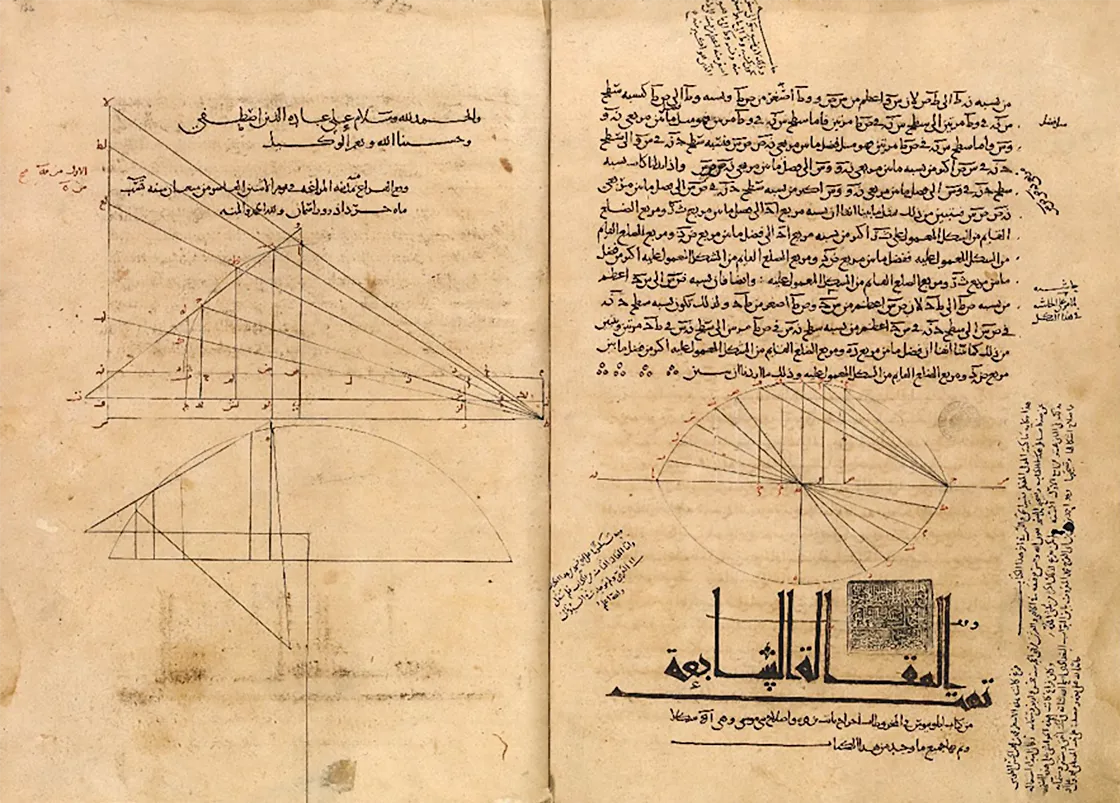
Apollonius of Perga is considered one of the great mathematicians of antiquity. His work, seen here in a 9th-century Arabic translation, continued to develop the geometric ideas of Euclid, who lived about a century earlier.
Using only Pappus’ description of Tangencies, Renaissance mathematicians attempted to retrace the original work. By 1643, René Descartes had discovered a simple relationship between the curvatures of any four circles that are tangent to each other. Descartes asserted that the sum of all the squared curvatures equals half the square of the sum of the curvatures. This means that, given three circles, it’s possible to calculate the radius of a fourth tangent circle. For example, if you have three circles with curvatures of 11, 14 and 15, you can plug those numbers into Descartes’ equation and calculate the curvature of the circle that would fit inside them: 86.
In 1936, the Nobel Prize-winning radiochemist Frederick Soddy noticed something odd as he built packings with Descartes’ relation. As the circles got smaller and curvatures bigger, he expected to get gnarly numbers with square roots or infinite decimals. Instead, all the curvatures were integers. This was a fairly straightforward consequence of Descartes’ equation, but nobody had noticed for hundreds of years. It inspired Soddy to publish a poem in the scientific journal Nature, which began:
For pairs of lips to kiss maybe
Involves no trigonometry.
’Tis not so when four circles kiss
Each one the other three.
The Possible and the Inevitable
Once it was established that there are packings full of integers, mathematicians tried to find patterns in those integers.
In 2010, Fuchs and Katherine Sanden set out to build on a paper from 2003. The duo observed that if you divided each curvature in a given packing by 24, a rule emerged. Some packings only have curvatures with remainders of 0, 1, 4, 9, 12 or 16, for example. Others only leave remainders of 3, 6, 7, 10, 15, 18, 19 or 22. There were six different possible groups.
As mathematicians examined the different categories of packings, they began to notice that for small enough circles — those with large curvatures — it seemed that every possible number within each category appeared for packings of that type. This idea came to be called the local-global conjecture. Proving it became “one of these little mathematicians’ dreams of mine,” Fuchs said. “Like, maybe at some point many years from now I’ll be able to solve it.”
In 2012, Kontorovich and Jean Bourgain (who died in 2018) proved that virtually every number predicted by the conjecture does occur. But “virtually all” does not mean “all.” For example, perfect squares are rare enough that, mathematically, “virtually all” integers are not perfect squares, even though, for instance, 25 and 49 are. Mathematicians thought the rare counterexamples that remained possible after Kontorovich and Bourgain’s paper didn’t actually exist, mostly because the two or three most well-studied circle packings seemed to follow the local-global conjecture so well, Kontorovich said.
Cranking Up That Dial
When Haag and Kertzer started this summer in Boulder, Rickards scribbled ideas on a blackboard in Stange’s office. “We had a whole list,” Rickards said. They had four or five starting points to experiment with. “Things you can just play with and see what happens.”
One idea was to compute all the possible circle packings that contain two arbitrary curvatures A and B. Rickards wrote a program that outputs a sort of ledger that reports which integers show up to the party when A is hosting.
Based on this program, Haag rustled together a Python script that plotted tons of simulations at once. It was like a multiplication table: Haag chose which rows and columns to include based on their remainders when they were divided by 24. Pairs of numbers that appear in an Apollonian packing together got white pixels; those that don’t got black pixels.
Haag plowed through dozens of plots — one for each pair of remainders in each of the six groups.
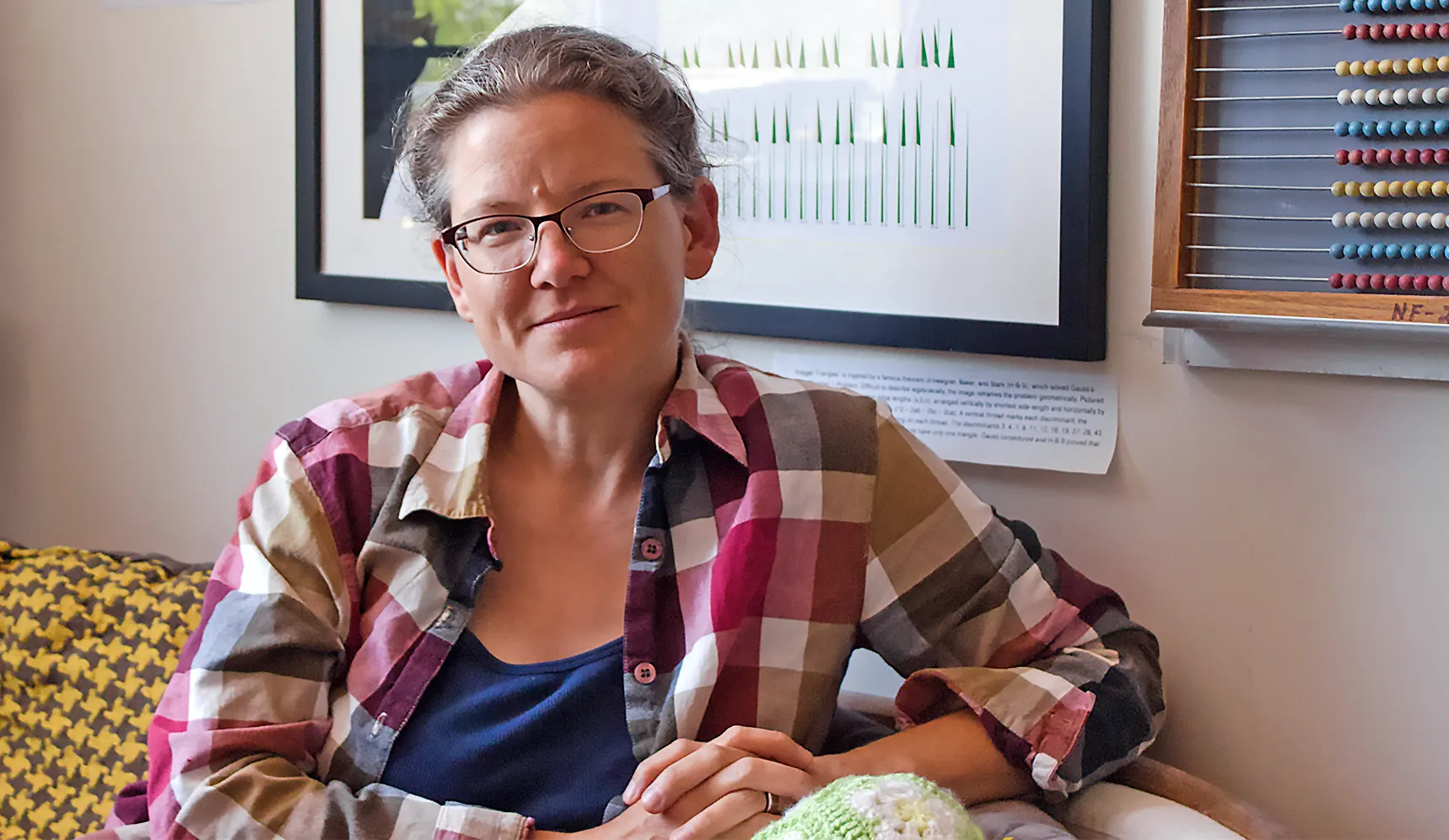
Katherine Stange, a mathematician at the University of Colorado, Boulder, would use the students’ insight to prove that the local-global conjecture doesn’t hold.
Nicholas Christoffersen
They looked exactly as expected: a wall of white, peppered with black specks for smaller integers. “We expected the black dots to peter out,” Stange said. Rickards added, “I thought maybe it would even be possible to prove they peter out.” He speculated that by looking at charts that synthesized many packings together, the team would be able to prove results that weren’t possible when they looked at any one packing on its own.
While Stange was away, Haag wound up plotting every pair of remainders — about 120. No surprises there. Then she went big.
Haag had been plotting how 1,000 integers interact. (The graph is bigger than it sounds, since it involves 1 million possible pairs.) Then she cranked the dial up to 10,000 times 10,000. In one graph, regular rows and columns of black specks refused to dissolve. It looked nothing like what the local-global conjecture would predict.
The team met on a Monday after Stange returned. Haag presented her graphs, and they all focused on the one with the weird dots. “It was just a continual pattern,” Haag said. “And that was when Kate said, ‘What if the local-global conjecture isn’t true?’”
“This looks like a pattern. It has to continue. So the local-global conjecture must be false,” Stange recalled thinking. “James was more skeptical.”
“My first thought was there must be a bug in my code,” Rickards said. “I mean, that was the only reasonable thing I could think of.”
Within half a day, Rickards came around. The pattern ruled out all pairs where the first number is of the form 8 × (3n ± 1)2 and the second is 24 times any square. This means 24 and 8 never appear in the same packing. Numbers you’d expect to occur don’t.
“I was kind of giddy. It’s not very often that something really surprises you,” Stange said. “But that’s the magic of playing with data.”
The July paper outlines a rigorous proof that the pattern they observed continues indefinitely, disproving the conjecture. The proof hinges on a centuries-old principle called quadratic reciprocity that involves the squares of two prime numbers. Stange’s team discovered how reciprocity applies to circle packings. It explains why certain curvatures can’t be tangent to each other. The rule, called an obstruction, propagates throughout the whole packing. “It’s just an entirely new thing,” said Jeffrey Lagarias, a mathematician at the University of Michigan who was a co-author on the 2003 circle-packing paper. “They’ve found it ingeniously,” Sarnak said. “If these numbers did appear, they would violate reciprocity.”
The Fallout
A number of other conjectures in number theory may now be in doubt. Like the local-global conjecture, they are hard to prove but have already been shown to hold for virtually all cases and are generally assumed to be true.
For example, Fuchs studies Markov triples, sets of numbers that satisfy the equation x2 + y2 + z2 = 3xyz. She and others have shown that certain types of solutions are connected for prime numbers greater than 10392. Everyone believes the pattern should continue to infinity. But in light of the new result, Fuchs has allowed herself to feel a twinge of doubt. “Maybe I’m missing something,” she said. “Maybe everyone’s missing something.”
“Now that we have a single example where it’s false, the question is: Is it false for these other examples too?” Rickards said.
There’s also Zaremba’s conjecture. It says that a fraction with any denominator can be expressed as a continued fraction that uses only the numbers between 1 and 5. In 2014, Kontorovich and Bourgain showed that Zaremba’s conjecture holds for almost all numbers. But the surprise about circle packing has undermined confidence in Zaremba’s conjecture.
If the packing problem is a harbinger of things to come, computational data may be the tool of its undoing.
“I always find it fascinating when new mathematics is born out of just purely looking at data,” Fuchs said. “Without it, it’s really hard to imagine that [they] would have stumbled upon this.”
Stange added that none of this would have happened without the low-stakes summer project. “Serendipity and an attitude of playful exploration both have such a huge role in discovery,” she said.
“It was pure coincidence,” Haag said. “If I didn’t go big enough, we wouldn’t have noticed it.” The work bodes well for the future of number theory. “You can glean understanding of mathematics through your intuition, through proofs,” Stange said. “And you trust that a lot because you spent a lot of time thinking about it. But you can’t argue with the data.”
Editor’s note: Alex Kontorovich is a member of Quanta Magazine’s scientific advisory board. He was interviewed for this story but did not otherwise contribute to its production.



